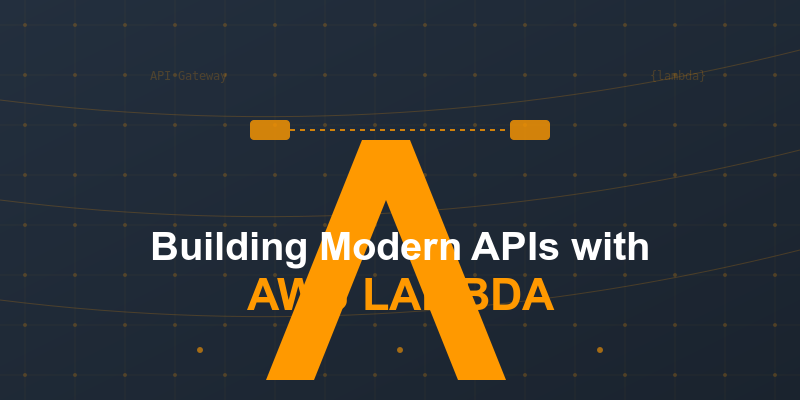Building APIs with AWS Lambda: My Journey from Traditional Servers to Serverless
 Gedion Daniel
Gedion Daniel
let me tell you something interesting! Remember those days when setting up an API meant renting a whole server, installing everything manually, and praying your server doesn't crash? Chai! Those days were not funny at all. But today, I want to share how AWS Lambda changed the game for me and how you too can jump on this serverless movement.
The Journey Begins
First time I heard about serverless computing, I was skeptical o! How can something run without a server? My developer friend kept telling me, "Guy, try AWS Lambda, it will change your life!" At first, I thought he was just catching cruise, but wallahi, he was right!
Why AWS Lambda Don Make Sense
Let me break it down for you:
You only pay for what you use - no need to waste money on idle servers
Automatic scaling - when traffic increases, Lambda just dey handle am
No server maintenance - forget about those Ubuntu updates and security patches
Integration with other AWS services dey smooth like shea butter
How to Create Your First Lambda API
Step 1: Set Up Your AWS Account
First things first, create your AWS account if you never get am. The free tier dey generous well well, so you fit test things proper before committing.
Step 2: Create Your Lambda Function
javascriptCopyexports.handler = async (event) => {
// This na simple example
const response = {
statusCode: 200,
body: JSON.stringify({
message: "Howfa! Your API don work!"
}),
};
return response;
};
Step 3: Set Up API Gateway
This one na where the magic dey happen. API Gateway go be like the bouncer for your Lambda function:
Go to API Gateway service
Create new REST API
Create new resource and method
Link am to your Lambda function
Deploy your API
Best Practices Wey I Don Learn
After building several APIs with Lambda, these na some wisdom wey I don gather:
Keep Your Functions Small Small No try to do too much inside one Lambda function. Break am into smaller pieces wey dey focused.
Handle Errors Proper
javascriptCopytry {
// Your logic here
} catch (error) {
console.error('Chai! Error don occur:', error);
return {
statusCode: 500,
body: JSON.stringify({
message: 'Something don scatter!'
})
};
}
- Use Environment Variables Keep your sensitive information like API keys for your database connection inside environment variables. No hardcode am!
The Challenges Wey You Go Face
Make I no deceive you - e get some challenges:
Cold starts fit slow down your first request
Debugging fit be tricky sometimes
You need good internet to deploy and test well well
AWS documentation fit confuse person sometimes
But no worry, these challenges no be something wey you no fit handle!
Cost Savings Don Make Me Smile
The thing wey sweet me pass na how I don save money. For my last project, instead of paying $50 every month for server, I dey pay like $5 because my Lambda functions only run when people dey use am.
Final Thoughts
If you never try serverless computing before, I say make you try am now now. AWS Lambda na very powerful tool wey fit help you build scalable APIs without all the wahala of managing servers.
You fit start small small, maybe with simple API endpoint, then as you dey comfortable, you fit add more features. The most important thing na to start!
Remember say: "The best time to learn new technology na yesterday, the second best time na today!"
If you get questions or you want make we discuss more about AWS Lambda, drop comment for below or reach out to me. Make we dey help each other grow for this tech journey!
#TechAfrica #AWSLambda #Serverless #WebDevelopment #APIDesign
Subscribe to my newsletter
Read articles from Gedion Daniel directly inside your inbox. Subscribe to the newsletter, and don't miss out.
Written by

Gedion Daniel
Gedion Daniel
I am a Software Developer from Italy.